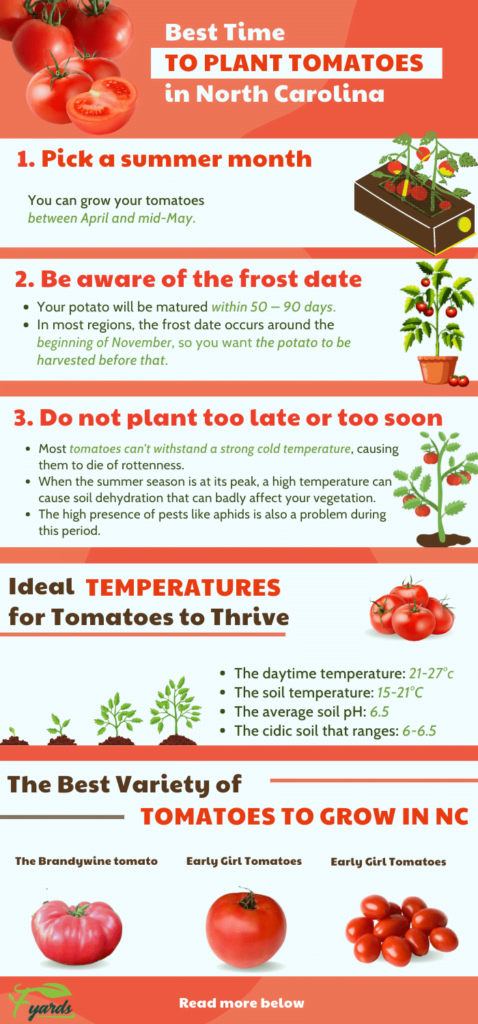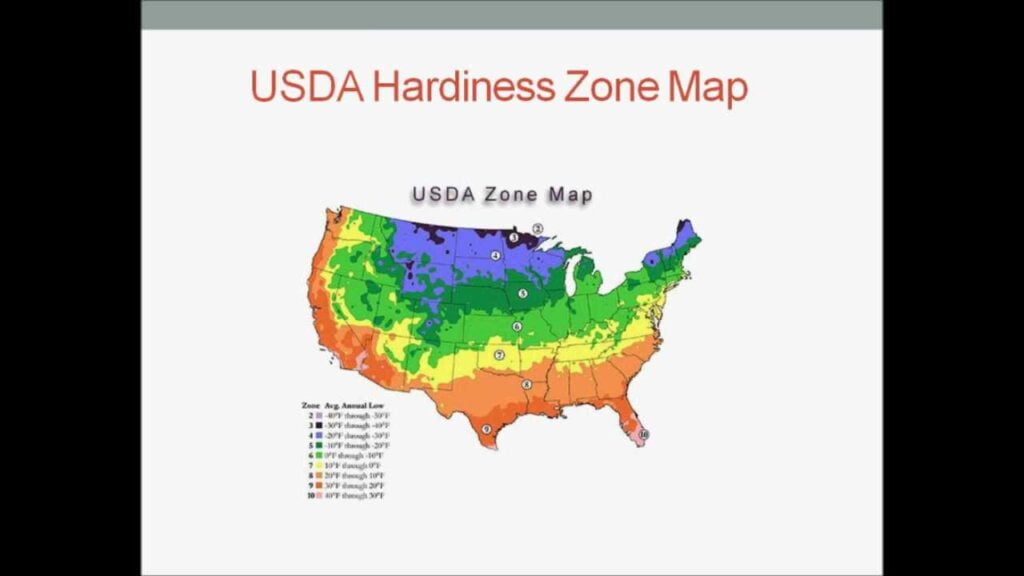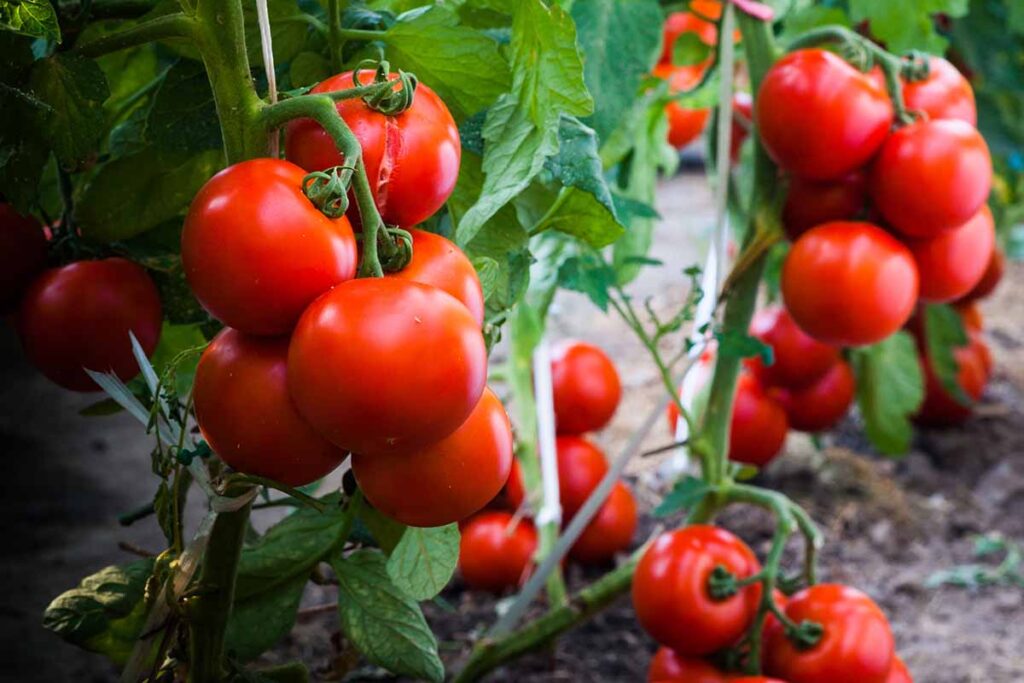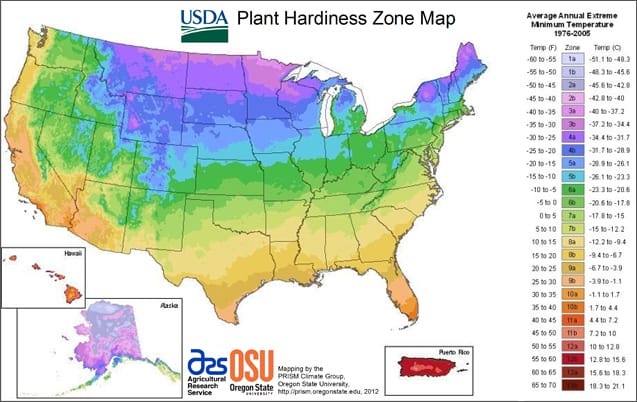Determining the optimal time to plant tomatoes is essential for maximizing their growth and yield potential. In this article, you will explore the various factors that influence the timing of tomato planting, including temperature requirements, frost risks, and regional considerations. By understanding these key considerations, you will be equipped with the knowledge necessary to plan your tomato planting schedule effectively and ensure a successful harvest.

Factors to Consider
When it comes to planting tomatoes, there are several factors that you need to consider in order to determine the appropriate planting time. These factors include climate, frost dates, soil temperature, and growing season length. By understanding and evaluating these factors, you can ensure the successful growth and development of your tomato plants.
Climate
The first factor to consider is the climate of your region. Tomatoes thrive in a warm and sunny climate, with temperatures ranging between 70 and 85 degrees Fahrenheit (21 and 29 degrees Celsius). If you live in a region with a more temperate or cooler climate, you may need to make special considerations or adjustments to optimize the growing conditions for your tomatoes.
Frost Dates
Another crucial factor to consider is the frost dates in your area. Tomatoes are highly susceptible to frost damage, so it’s important to plant them after the last expected frost date in your region. Frost dates vary depending on the geographical location and can be easily obtained from local gardening resources or climate databases. Planting tomatoes before the last frost date can result in stunted growth or even the death of your plants.
Soil Temperature
Soil temperature plays a significant role in the successful growth of tomatoes. Tomatoes prefer warm soil temperatures, ideally between 60 and 70 degrees Fahrenheit (15 and 21 degrees Celsius). Cold soil can hinder the germination process and slow down the growth of your tomato plants. Using a soil thermometer, you can measure the temperature of your soil to ensure it is within the optimal range for planting tomatoes.
Growing Season Length
The length of the growing season in your region is an important factor to consider when determining the planting time for tomatoes. The growing season refers to the period of time between the last spring frost date and the first fall frost date. It is crucial to choose tomato varieties that can mature within the available growing season. Certain varieties require a longer growing season, while others are specifically bred to mature quickly.
Determining the Planting Time
Now that we have discussed the factors to consider when planting tomatoes, let’s delve into the methods for determining the appropriate planting time. There are three common methods that can help you determine the optimal time to plant your tomatoes: using the last frost date, conducting a soil temperature test, and following location-specific guidelines.
Method 1: Using the Last Frost Date
One reliable method for determining the planting time is to use the last expected frost date in your region. As mentioned earlier, tomatoes are sensitive to frost, and planting them too early can result in damage or death. By identifying the average last frost date, you can calculate when it is safe to plant your tomatoes. It is generally recommended to wait at least two weeks after the last frost date before planting tomatoes in the ground.
Method 2: Soil Temperature Test
Another effective method for determining the planting time is by conducting a soil temperature test. As mentioned earlier, tomatoes prefer warm soil temperatures for optimal growth. Using a soil thermometer, measure the temperature of your soil at a depth of four inches (10 centimeters). If the soil temperature consistently remains above 60 degrees Fahrenheit (15 degrees Celsius), it is an indication that the soil is ready for tomato planting.
Method 3: Location-Specific Guidelines
Lastly, you can rely on location-specific guidelines provided by local gardening resources or agricultural extensions. These guidelines take into account the specific climate and growing conditions of your region. They provide valuable information on the recommended planting times for tomatoes and other crops. By following these guidelines, you can ensure that your tomato plants have the best chance of thriving in your specific location.

Planting Tomatoes in Spring
Spring is a popular time for planting tomatoes as the weather starts to warm up and the risk of frost diminishes. Here are the key steps to successfully plant tomatoes in the spring:
Preparing the Soil
Before planting your tomatoes, it is essential to prepare the soil properly. Tomato plants thrive in well-drained soil that is rich in organic matter. Start by removing any weeds or grass from the planting area. Dig the soil to a depth of 8 to 10 inches (20 to 25 centimeters) and incorporate compost or well-rotted manure to improve the soil’s fertility and structure. This will provide your tomato plants with the essential nutrients they need for healthy growth.
Choosing the Right Tomato Varieties
Selecting the right tomato varieties is crucial for successful spring planting. Opt for early-maturing varieties that can produce ripe fruits within the available growing season. These varieties have a shorter maturity period, ranging from 55 to 70 days. Some popular early-maturing tomato varieties include ‘Early Girl,’ ‘Celebrity,’ and ‘Fourth of July.’ These varieties are bred to mature quickly and are well-suited for spring planting.
Starting Seeds Indoors
To get a head start on the growing season, you can start tomato seeds indoors about six to eight weeks before the last expected frost date. Use seed trays or small pots filled with a well-draining seed-starting mix. Sow the seeds according to the package instructions and keep them in a warm and well-lit area, such as a sunny window sill or under grow lights. Provide adequate moisture and ventilation, and transplant the seedlings to larger pots once they develop true leaves.
Transplanting Seedlings
Once the threat of frost has passed and the soil has warmed up, it’s time to transplant your tomato seedlings into the garden. Choose a sunny spot with well-drained soil. Dig holes that are slightly deeper than the root ball of the seedlings and gently place them in the holes. Fill the holes with soil and firm it around the base of the plants. Water the seedlings thoroughly and provide support, such as stakes or cages, to help them grow upright.
Planting Tomatoes in Summer
While spring is the most common planting time for tomatoes, it is possible to plant them in the summer, especially if you live in a region with a longer growing season or a warm climate. However, there are a few considerations to keep in mind when planting tomatoes in the summer:
Preparing the Soil
As with spring planting, preparing the soil is essential for summer tomato planting. Amend the soil with organic matter to improve its fertility and drainage. Incorporate compost, aged manure, or other organic amendments to enrich the soil and enhance its ability to retain moisture. Adequate soil preparation ensures that your tomato plants receive the necessary nutrients and have good root development.
Selecting Heat-Tolerant Varieties
When planting tomatoes in the summer, it is crucial to choose heat-tolerant varieties that can withstand the high temperatures and potential heatwaves. Heat-tolerant varieties are bred to thrive in hot climates and are more likely to set fruit and continue producing during the peak of summer. Some popular heat-tolerant tomato varieties include ‘Heatwave II,’ ‘Solar Fire,’ and ‘Sahara.’ These varieties have traits that allow them to tolerate high temperatures without compromising fruit set or quality.
Direct Sowing or Transplanting
In the summer, you have the option to either directly sow tomato seeds into the garden or transplant seedlings. Direct sowing involves planting the seeds directly into the prepared soil, while transplanting involves planting pre-grown seedlings. If you choose to direct sow, make sure to sow the seeds at the recommended depth and provide consistent moisture for germination. If you opt for transplanting, follow the same steps as for spring planting, ensuring that the seedlings are well-watered and supported.
Protecting Young Plants from Heat
During the hot summer months, it’s important to protect your young tomato plants from excessive heat. One effective way to shield them from intense sunlight is by providing shade. You can use shade cloth or row covers to create a temporary shade structure. This will help to prevent sunburn and reduce heat stress on the plants. Additionally, ensure your tomato plants receive adequate water, as they need more moisture during hot weather to compensate for increased transpiration.

Planting Tomatoes in Fall
In some regions, it is possible to plant tomatoes in the fall for a late-season harvest. Fall planting can extend your tomato-growing season and allow you to enjoy fresh tomatoes even after the summer has ended. Here are the steps to successfully plant tomatoes in the fall:
Preparing the Soil
Just like in spring and summer, preparing the soil is crucial for fall tomato planting. Remove any debris or spent crops from the planting area and amend the soil with compost or well-rotted manure to improve its fertility and structure. This will provide your fall tomato plants with the necessary nutrients for growth and development.
Selecting Quick-Maturing Varieties
When planting tomatoes in the fall, it is essential to choose quick-maturing varieties that can produce ripe fruits within a shorter span of time. Quick-maturing varieties typically have a maturity period of 50 to 70 days. These varieties are specifically bred to mature quickly, allowing you to harvest ripe tomatoes before the first fall frost. Popular quick-maturing tomato varieties include ‘Early Cascade,’ ‘Siberian,’ and ‘Sub-Arctic Plenty.’
Transplanting or Direct Sowing
Similar to summer planting, you have the option to either transplant seedlings or directly sow tomato seeds in the fall. If you choose to transplant, start your seedlings indoors about six to eight weeks before the first expected fall frost date. Transplant the seedlings into the garden once they are well-established and the soil has cooled down. If you opt for direct sowing, ensure that the soil is warm enough, and sow the seeds according to the package instructions.
Protecting Plants from Early Frost
Fall planting comes with the inherent risk of early frosts. To protect your fall tomato plants from frost damage, monitor the weather conditions closely and be prepared to cover your plants if frost is predicted. Use frost blankets, row covers, or even old bedsheets to cover the plants overnight when frost is expected. This will help to trap the heat from the soil and prevent the plants from freezing. Remember to remove the covering during the day to allow sunlight and airflow.
Tips for Successful Tomato Planting
To achieve successful tomato planting and cultivation, there are several tips and best practices to keep in mind. These tips will enhance the growth, productivity, and overall health of your tomato plants:
Properly Watering Tomatoes
Tomatoes require consistent and adequate moisture throughout their growth cycle. Water deeply, ensuring that the soil is evenly moist but not waterlogged. Avoid overhead watering, as it can lead to the spread of diseases. Instead, focus on directing the water at the base of the plants to minimize fungal infections. Watering in the morning allows the foliage to dry out during the day, reducing the risk of diseases.
Applying Mulch
Mulching is an essential practice for tomato gardening. Mulch helps to conserve soil moisture, regulate soil temperature, and suppress weed growth. Apply a layer of organic mulch, such as straw, leaves, or grass clippings, around the base of the plants. This will help to retain moisture, reduce evaporation, and provide insulation for the roots. Mulching also prevents soil splashing onto the lower leaves, minimizing the risk of soil-borne diseases.
Providing Support
Tomato plants require some form of support to prevent sprawling and keep the fruits off the ground. There are various support methods, including stakes, cages, and trellises. Staking involves using a sturdy stake placed next to the plant, and tying the main stem to the stake as it grows. Caging involves setting up a cage around the plant at transplanting, allowing the plant to grow through the cage’s openings. Trellising involves training the plants to grow vertically using strings or wires.
Regular Care and Maintenance
Regular care and maintenance are crucial for the overall health and productivity of your tomato plants. This includes regular inspection for pests and diseases, removing any yellowed or diseased leaves, and pruning to promote airflow and discourage disease development. Regularly check for signs of pest infestation, such as aphids, caterpillars, or tomato hornworms, and take appropriate measures to control them using organic methods if possible.

Common Mistakes to Avoid
When planting tomatoes, it’s important to avoid common mistakes that can hinder the growth and productivity of your plants. By being aware of these mistakes, you can ensure the best possible outcome for your tomato garden:
Planting Too Early
One common mistake is planting tomatoes too early in the season, before the last expected frost date. As mentioned earlier, tomatoes are highly sensitive to frost, and planting them too early can result in stunted growth or death. It is crucial to wait until the risk of frost has passed and the soil has sufficiently warmed up before planting your tomatoes.
Planting in Unsuitable Soil
Planting tomatoes in unsuitable soil can severely impact their growth and productivity. Tomatoes thrive in well-drained soil that is rich in organic matter. Heavy clay soil or soil with poor drainage can lead to root rot and other diseases. It is important to prepare the soil properly, incorporating organic matter and ensuring good drainage, before planting your tomato plants.
Choosing Incompatible Varieties
Choosing incompatible tomato varieties can lead to disappointing results. It is important to select varieties that are well-suited to your specific climate, growing conditions, and desired harvest time. Ensure that you choose varieties with maturity periods that align with your growing season. Additionally, consider heat-tolerant varieties for summer planting and quick-maturing varieties for fall planting.
Neglecting Adequate Watering
Inadequate watering can have detrimental effects on your tomato plants. Insufficient water can lead to stunted growth, blossom end rot, and reduced fruit production. Conversely, overwatering can cause root rot and other fungal diseases. It is important to maintain consistent moisture levels in the soil, ensuring that the plants receive adequate water without being waterlogged. Regularly check the soil moisture levels and adjust your watering schedule accordingly.
Extending the Growing Season
If you want to extend your tomato-growing season, there are several techniques and methods that you can employ to optimize the growing conditions and protect your plants from unfavorable weather conditions:
Using Protective Covers
Protective covers, such as row covers or frost blankets, can effectively extend the growing season for tomatoes. These covers create a microclimate around the plants, trapping heat and protecting them from cold temperatures. Row covers can also provide protection against pests and wind damage. However, it is important to remove the covers during sunny days to allow sunlight and airflow to reach the plants.
Utilizing Greenhouses or High Tunnels
Greenhouses and high tunnels are more advanced methods of season extension. These structures provide an enclosed environment for your tomato plants, protecting them from adverse weather conditions and providing optimal growing conditions. Greenhouses and high tunnels can be equipped with heating and ventilation systems to regulate temperature and humidity, allowing you to grow tomatoes year-round in some regions.
Implementing Season Extension Techniques
Aside from protective covers and structures, there are other season extension techniques that can be employed to maximize the tomato-growing season. Techniques such as successive planting, intercropping, and crop rotation can help you stagger the planting and harvesting of tomatoes, allowing for a continuous supply of fresh fruits throughout the season. Additionally, using cold frames or hoop houses can provide temporary protection and allow you to start planting tomatoes earlier in the spring.

When to Harvest Tomatoes
Knowing when to harvest your tomatoes is crucial for optimal flavor, ripeness, and quality. Here are some indications to look for when determining if your tomatoes are ready for harvest:
Observing Color and Firmness
Tomatoes will begin to change color as they ripen. Keep an eye on their visual appearance and wait until they develop their characteristic red, yellow, or orange color, depending on the variety. Additionally, gently squeeze the tomatoes to check their firmness. Ripe tomatoes should be slightly soft when pressed, but not overly mushy or too firm.
Checking for Wrinkles or Cracks
Another sign of tomato ripeness is the presence of wrinkles or cracks on the skin. As the tomatoes mature, they may develop fine wrinkles or shallow cracks. These are indications that the fruit is reaching its peak ripeness and flavor. However, avoid harvesting tomatoes with deep cracks or severe wrinkling, as these may be signs of over-ripeness or certain diseases.
Understanding Maturity Levels
Tomatoes come in different maturity levels, ranging from mature green to fully ripe. Mature green tomatoes are typically green with a hint of color on the bottom, while vine-ripened tomatoes are fully colored and ready to eat. Some varieties are specifically bred for green or yellow ripening, so it’s important to understand the maturity level of the variety you are growing.
Indications for Different Uses
The purpose for which you plan to use your tomatoes can also influence when to harvest them. If you prefer tomatoes for slicing or eating fresh, it is best to wait until they are fully ripe and have reached their maximum flavor. However, if you plan to use tomatoes for canning or cooking, you can harvest them when they are slightly underripe to ensure they hold their shape during the cooking process.
Conclusion
Planting tomatoes at the right time is crucial for a successful harvest. By considering factors such as climate, frost dates, soil temperature, and growing season length, you can determine the optimal planting time for your tomatoes. Whether you choose to plant in spring, summer, or fall, proper preparation, variety selection, and regular care will contribute to the healthy growth and productivity of your tomato plants. Avoiding common mistakes and implementing season extension techniques can help you maximize your tomato-growing season and enjoy delicious, homegrown tomatoes throughout the year. Remember to monitor your tomatoes closely for ripeness and harvest them at the appropriate time to ensure the best flavor and quality. With careful planning and attention to detail, you can enjoy the satisfaction of a bountiful tomato harvest.



